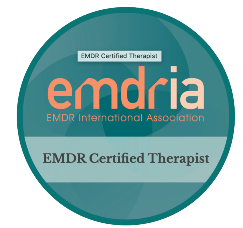Understanding Your Attachment Style
Our earliest relationships form the foundation for life. They shape the way we love, our ability to manage emotion and our ability to connect in healthy relationships throughout life. From the moment a baby enters the world, they are seeking security, safety sustenance and love. As their eyes search for connection with their mother and or father, they are forming the patterns by which they will connect with others and regulate their emotions throughout life.
Mary Main and Mary Ainsworth were two psychologists who both contributed to the development of an attachment model, building on earlier work done by psychologist, John Bowlby. To this day this model represents the four primary attachment styles: Secure, Dismissive/Avoidant, Anxious/Preoccupied, and Disorganized.
Which of these styles represent your attachment style?:
Secure Attachment
Secure attachment represents the bulk of the population, and is indicative of a positive, caring relationship with one or both parents in the early years of life. If you have a secure attachment, your needs during your early years were met with warmth and attunement, helping you to develop a sense of trust, ability to self soothe and a sense of value and being loved.
Dismissive/Avoidant
Dismissive/Avoidant attachment style is often the result when a parent is dismissive in their attachment style. If this is your attachment style, your parents may have been afraid of connection. They may have become frustrated when you would seek reassurance or comfort and, as a result, you may have learned to reject your own emotions in an effort to avoid the pain.
Children with this attachment style lack solid parental connection. When a parent is connected with their child, they are attuned. They make good eye contact, have mostly appropriate responses to their child, soothe and comfort their child’s pain, happiness, worry, fear and more. Therefore, adults with this dismissive attachment style may find it difficult to remember their childhood with great detail, or may have a difficult time accessing emotions of any kind.
Anxious/Preoccupied
Anxious/Preoccupied attachment style is what develops when a baby’s parent or parents are unpredictable in their ability to provide safety, security and comfort. If you have this attachment style, you may have experienced that one minute your parents were loving and warm, and the next minute they were anxious, angry, or disconnected.
In these cases, the child becomes anxious and insecure, uncertain of the response they will receive from their parent. As adults, people with this attachment style may have a push and pull in their interactions with others. They may be entangled at one moment and letting go at the next. Consequently, they often lack boundaries, have a more difficult time regulating their own emotions, and may have drastic ranges in their emotions from very upset to very angry to very happy. Furthermore, their response to triggers in their life may seem to elicit disproportionate reactions.
Disorganized
The disorganized attachment style is the result of having a parent who had a troubled state of mind and struggled with emotion regulation. If you identify with this attachment style, you may have had a parent that had unresolved trauma of their own. As a result, they may have been in a heightened state of fear and anxiety most of the time.
In these cases, the baby’s needs are often not met and the parent is unable to soothe them. The parent’s own state of anxiety may be projected onto the child. Hence, the child, who picks up on the parent’s physical and emotional state, ends up feeling as though they too are in a constant state of fear and anxiety. In some cases, this style of attaching develops as a result of abuse by the parent. This can cause the child to retreat to their inner world and develop a way of dissociating as a protective measure.
In the world of therapy and psychology, therapists treat each of these attachment styles differently in order to repair the damage that may have resulted from those early relationships. This work can impact the way that you connect with others, manage your emotions, and love yourself. With the help of a qualified therapist, you can explore those early building blocks of relationship and self and may find the root of many of your challenges. The good news is that it is possible to rebuild and repair the patterns that set hold early on, impacting your true understanding of self and other.





